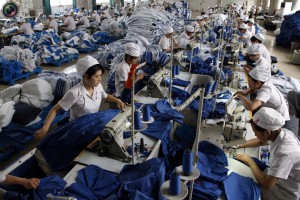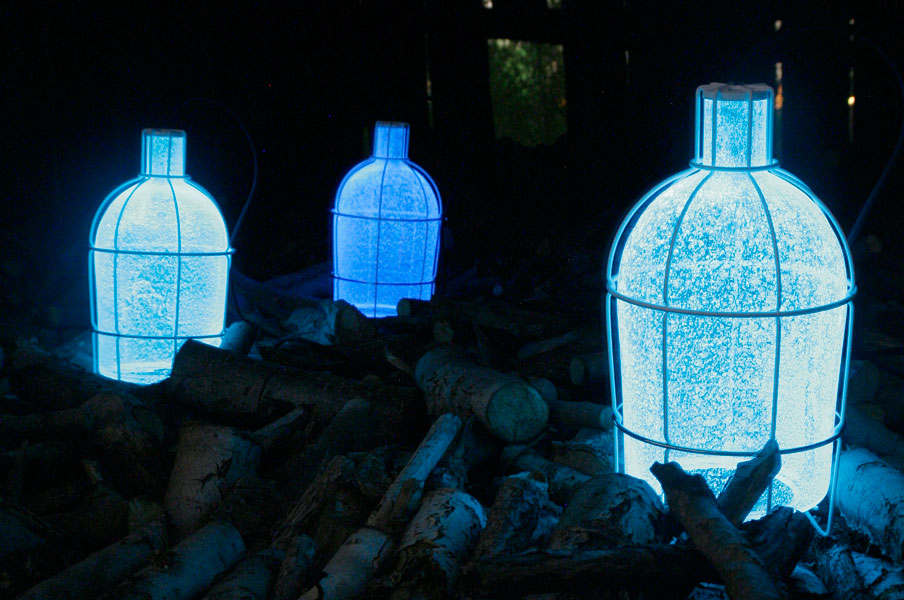In the fashion industry the topic of sustainability and eco-friendliness has not been on the top of the priority list one might say. Trends change every season, and to stay in style you are expected to renew your wardrobe at least twice per year. High-end designers are now launching even more than two collections a year, you have the so-called pre-fall and resort collections as well as the biannual summer and winter. Chain stores are introducing new collections as often as every six weeks. At the same time as this is happening, fashion is getting cheaper and cheaper. The high-street brands keep pushing prices lower by producing their clothes in countries that are known for using child labor and having extremely poor working conditions. The materials used are usually of very bad quality, which is probably also produced in an unethical way. So with facts like these you don’t have to be the sharpest tool in the shed to see that this is not a very sustainable approach
"sustainable" Tag
A FIGHT FOR SUSTAINABLE LIGHT
Saturday, January 28, 2012
sustainable |s??st?n?b?l|
adjective
able to be maintained at a certain rate or level : sustainable fusion reactions.
• Ecology (esp. of development, exploitation, or agriculture) conserving an ecological balance by avoiding depletion of natural resources.
• able to be upheld or defended : sustainable definitions of good educational practice.
Sustainability has become an word used easily in the design world. It has become somewhat of a trend to be sustainable. However, to what extent are these designers, categorized as sustainable, truly part of that platform? Recently, there has been an exhibition in the Boijmans van Beuningen in Rotterdam on sustainability, slow design and new energy. There was a great collection of works that were chosen to be displayed in the museum by the curator. While I was walking through the collection I wondered how and why the curator had chosen to present these particular works. There is a link to sustainability in all of them, yet, is the relationship valid enough?
There were many products which used natural elements, but do they fulfill the criteria of being sustainable? As you can see above the definition is: ‘conserving an ecological balance by avoiding depletion of natural resources’. This is a very complex statement. If you are creating awareness of the natural resources and using it as a platform for design does that imply that you are being sustainable? It seems to be that designer takes this idea of sustainability a bit too easily. To investigate this concept I interviewed Mike Thompson and looked at his work.
Mike Thompson sees himself as an instigator of design in the bio-technological world. Using unusual power sources, he has developed a myriad of ways to create light. One of these unusual design was shown in the Boijmans exhibit. The piece, named “the blood lamp“, contains a fluid, which reacts to blood to create an ambient lighting. Curious about it’s versatility, I asked Mike Thompson whether his light only reacts on blood or if other fluids could trigger a similar reaction. The answer was surprising, a yes for urine. Urine is as effective as blood as it is the ions that react to the fluid.
His objective behind the project was to create a ‘debate piece’. In his words: a piece that would ‘plant a seed of thought’ and ‘change our relationship towards energy’. The user of the lamp would have to think about the sacrifice (blood donation) that would have to be made in order to use energy. Blood, is a romantic to stimulate self-analysis. Do we use energy with that same consciousness, when we are in fact sacrificing the delicate balance of our natural surroundings.
Blood Lamp – Mike Thompson video
My choice to investigate Mike Thompson as the representing designer of the Booijmans van Beuningen, was based on the fact that he established a piece which by using beautiful symbolism, had created a clear message towards the public. However the question still remains whether or not we can call this ‘enlightening’ piece sustainable.
When I asked Mike Thompson how he interpreted the word sustainability; he directly admitted that his work and his way of working was not based on being sustainable. He merely wanted to create some consciousness and does not believe that his rather unsustainable process of creating pieces will distract from the message he is trying to bring across.
But is this the role of the designer? Designers, in this day and age are merely the instigators of something new and innovative. It is the role of the designer to create something tangible for the public. Mike Thompson is working on a biotechnological level surrounded by people whose main goal may only be sustainability. From which a product or solution may appear that do not relate to the world around us. The designer’s role can be seen as a mediating role, a role which Mike Thompson takes with pride. It is important to remember ‘that no one is shown the way to speculate’ and speculation is all we can do. A nice example of how the relationship between the design world and the biotechnological world works, is a new project that Mike Thompson is working on. He is in cooperation to create an ambient light that would trap light. The principle behind trapping light is that the lamp would catch light through which it would be able to reuse light and work for hours after the light has been trapped. In theory this project may work, but it does not yet. This initiation of creating the trapped light can cultivate a whole new stream of designs for recyclable light sources. Mike Thompson often works in theory, he has also designed a light called the algae light. The light would hypothetically work through photosynthesis. This however is not possible. But by designing these hypothetical pieces he has initiated a chain of thoughts: Are we able to use these natural processes for our own benefits? Or as he has written on his website: Are we able to use a flower as a light switch?. A question definitely worth further investigation.
In relation to many other works that where exposed I do believe that the work of Mike Thompson has an interesting approach to sustainability. I would however like to put him on a new platform, and make clear that he is not being sustainable with the blood lamp and is in no way ‘conserving natural resources’. The platform for designers that I would like to create and initiate would be called; ‘instigators of sustainability’. You can question whether this does not fall under slow design, but I am a great fan of clear labels, and words like sustainability are very easily manipulated to something that it is not. To prevent this from happening again we can merely add the verb ‘instigator’.
More on Mike Thompson: http://www.miket.co.uk/
A cleaner environment where the light will shine on
Friday, January 27, 2012
2012. – After a conversation with Eric Klarenbeek
In a time of growing public awareness of the prevailing environmental consciousness. Consumers are looking for ways to contribute to the unnecessary burden of the environment. Large companies want to connect to these developments of environmental consciousness. Often because of the shared concern for the environment, but also because it will create a new market. Inventors search for products which are environmentally conscious, beautiful, and also financially interesting. You can summarize these results as ‘sustainable design’.
An example is Google’s new computer design which shows a more efficient use of less energy than most computers. Another example is “General Electric” which is increasingly investing in the design of cleaner technologies.
This investment in “permanent design” is not only on a multinational level. People are also searching on a smaller, more individual level for the environmentally conscious design. After the exhibition “New energy in design” at the Boijmans van Beuningen in Rotterdam, I came in contact with the work of Eric Klarenbeek ‘designer of the unusual‘. After passing the Design Academy in Eindhoven, Eric Klarenbeek (Amsterdam, 1978) started his own studio in Zaandam. “His work is characterized by innovation and answers the developments on environmental consciousness in today’s society.”

